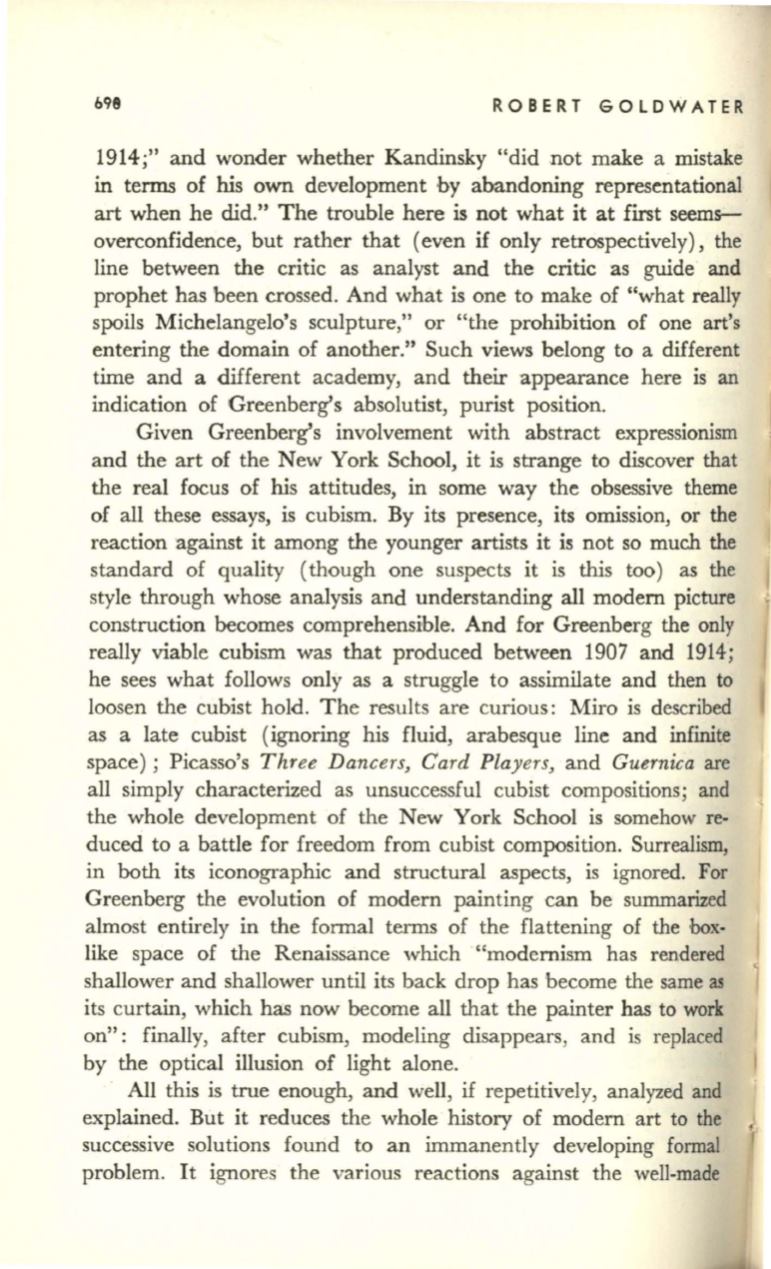
b98
ROBERT GOLDWATER
1914;" and wonder whether Kandinsky "did not make a mistake
in terms of his own development by abandoning representational
art when he did." The trouble here is not what it at first seems–
overconfidence, but rather that (even if only retrospectively), the
line between the critic as analyst and the critic as guide and
prophet has been crossed. And what is one to make of "what really
spoils Michelangelo's sculpture," or "the prohibition of one art's
entering the domain of another." Such views belong to a different
time and a different academy, and their appearance here is an
indication of Greenberg's absolutist, purist position.
Given Greenberg's involvement with abstract expressionism
and the art of the New York School, it is strange to discover that
the real focus of his attitudes, in some way the obsessive theme
of all these essays, is cubism. By its presence, its omission, or the
reaction against it among the younger artists it is not so much the
standard of quality (though one suspects it is this too) as the
style through whose analysis and understanding all modem picture
construction becomes comprehensible. And for Greenberg the only
really viable cubism was that produced between 1907 and 1914;
he sees what follows only as a struggle to assimilate and then to
loosen the cubist hold. The results are curious: Miro is described
as a late cubist (ignoring his fluid, arabesque line and infinite
space); Picasso's
Three Dancers, Card Players,
and
Guernica
are
all simply characterized as unsuccessful cubist compositions; and
the whole development of the New York School is somehow re–
duced to a battle for freedom from cubist composition. Surrealism,
in both its iconographic and structural aspects, is ignored. For
Greenberg the evolution of modern painting can be summarized
almost entirely in the formal terms of the flattening of the box–
like space of the Renaissance which "modernism has rendered
shallower and shallower until its back drop has become the same as
its curtain, which has now become all that the painter has to work
on": finally, after cubism, modeling disappears, and is replaced
by the optical illusion of light alone.
All this is true enough, and well, if repetitively, analyzed and
explained. But it reduces the whole history of modem art to the
successive solutions found to an immanently developing formal
problem.
It
ignores the various reactions against the well-made


